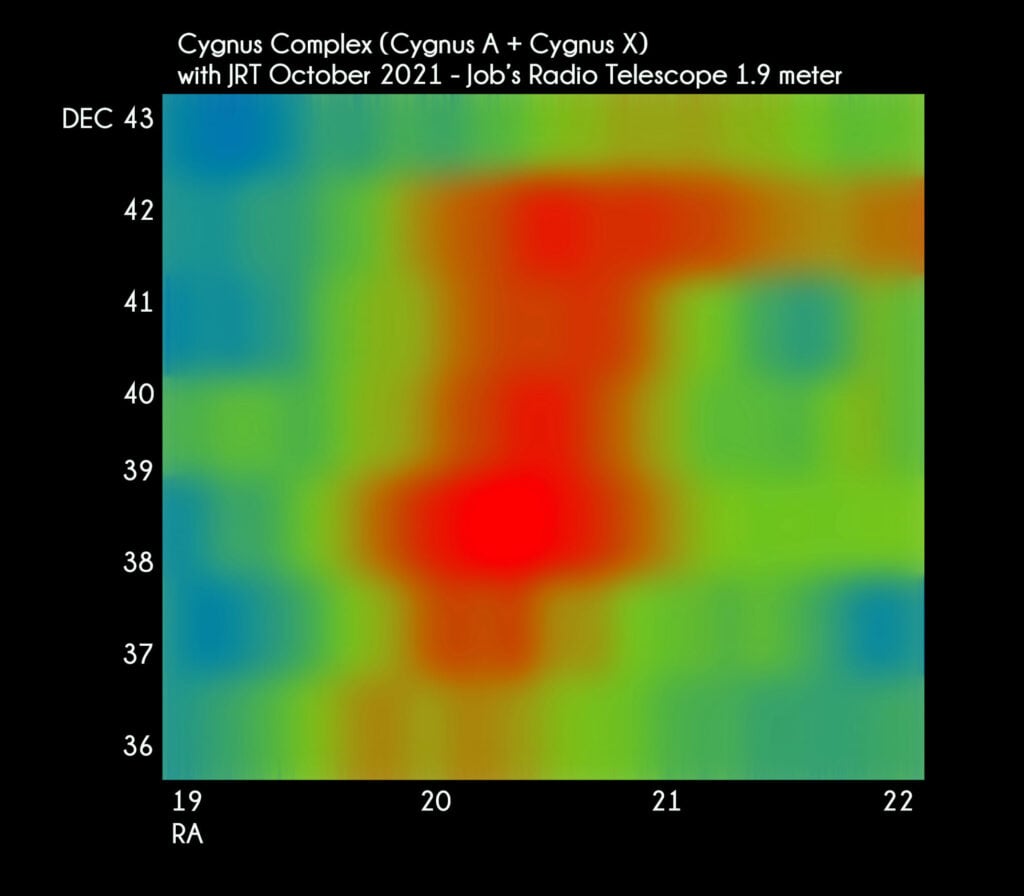Imaging the Cygnus Star Forming Region with an RTL-SDR and Amateur Radio Telescope
Over on Facebook Job Geheniau has posted results from his latest radio astronomy experiment which involves imaging the Cygnus-X star forming region at 1424 MHz with a 1.9m radio telescope, an RTL-SDR and some additional filtering and LNAs. In the past we've posted about Geheniau's previous work which involved imaging the entire Milky Way at 1420 MHz, and measuring the basis for the dark matter hypothesis with a similar process and the same equipment. His latest post reads:
Cygnus-X is a massive star-forming region in the constellation Cygnus at a distance of 1.4 kiloparsecs (4600 light-years) from the Sun.
Cygnus-X has a size of 200 parsecs and contains the largest number of massive protostars and the largest stellar association within 2 kiloparsecs of the Sun. Cyg X is also associated with one of the largest molecular clouds known, with a mass of 3 million solar masses.
[Wikipedia]The idea:
To take a radio picture of the Cygnus complex (Cygnus A + Cygnus X) with my 1.9 meter radio telescope.
Equipment:
1.5 - 1.9 meter radio telescope
Mini Circuits LNA ZX60-ULN33+
Bandpass filter 1200-1700 MHz
2nd LNA
RTL-SDR
VirgoSoftImplementation:
Multiple 4-hour drift scans of the Cygnus complex and beyond.
In order not to be affected by HI at 1420 MHz, measurements were made at 1424 MHz. At this frequency there is Synchrotron radiation and no neutral hydrogen emission.
To be sure that no Milky Way synchrotron radiation is measured there would be no or hardly any measurable power change outside the Cygnus complex during the drift scan. This was also observed in these measurements and also confirmed earlier in test measurements.A total of 7 drift scans of 4 hours were made at 1424 MHz. Because the start of the driftscan generates a lot of wrong data (the 'cooling down/warming up' of the RTL-SDR), this has been removed in the measurements.
The measurement starts at 2000 seconds and is always aborted at 12000 seconds in post-processing.7 shots from RA 19 to RA 22. The declination varied each observation from DEC 36 to 43 degrees.
Because not every driftscan was perfect (heavy clouds gave worse results anyway as well as wind/rain or rfi) a total of 15 measurements were done, of which 7 were thus acceptable enough for editing.
In the end JRT performed measurements from 24 September to 9 October. Patience is a good thing.
Results:
By editing the driftscan data in Excel with Conditional Format (giving color to the data) the final result is a 'radio photo' of the complex.Of course, in view of the dish diameter, the beam is 8 degrees and thus a somewhat rough image of the Cygnus complex is sketched here.
Job Geheniau - Netherlands.
